Michigan vegetable crop report - June 8, 2022
Crops are growing after a slow start with the promise of good things to come.

Weather
Watch Jeff Andresen’s weather update here.
Last week started warmer than normal and then turned cool, with heavy rain in southeastern Michigan and totals lower to the northwest. Degree day totals are still a few days to a week ahead of normal, with the exception of the western Upper Peninsula., the “stay cool and dry” capital of Michigan this spring.
The forecast calls for:
- Increasing clouds Wednesday with showers developing west-east across the southern half during the afternoon. Partly sunny and cool north. Rain ending overnight by Friday morning.
- Mostly sunny and dry Thursday. Scattered showers possible again Friday and Friday evening south.
- Partly cloudy and cool this weekend with isolated showers possible. Overall, greatest rainfall coverage and highest totals during the upcoming week across southern sections.
- Precipitation is forecast total close to 0 inches or up to 0.5 inches, with the higher totals to the south, it should be a drier week.
- Daytime temperatures in the upper 60s, low 70s this week, warming into the 70s to low 80s by early next week. Lows in the 40s and 50s this week warming into the 50s by Sunday.
- Medium range guidance calls for a warming trend next week.
- Potential evapotranspiration is expected to be close to normal for the coming week, if soils are starting the week dry keep an eye out and apply irrigation as needed.
Help is here: Get plugged into the new Enviroweather
Do you need help with setting up an account and dashboard on Enviroweather’s new website? You can send an email to eweather@msu.edu with the weather stations, crops and models that you are interested in, and we’ll set it up.
Field progress
Hairy vetch was flowering this week in southwest Michigan, and header lines were being hooked up and buried all over.
Low tunnels, high heat?
It is completely counterintuitive, but multiple farms have observed injury to vegetable transplants that were under low tunnels over the past month. The type of injury growers have seen has been associated with high temperatures in past years. Check out a past issue of our MSU vegetable report for a bit more text on this phenomenon.
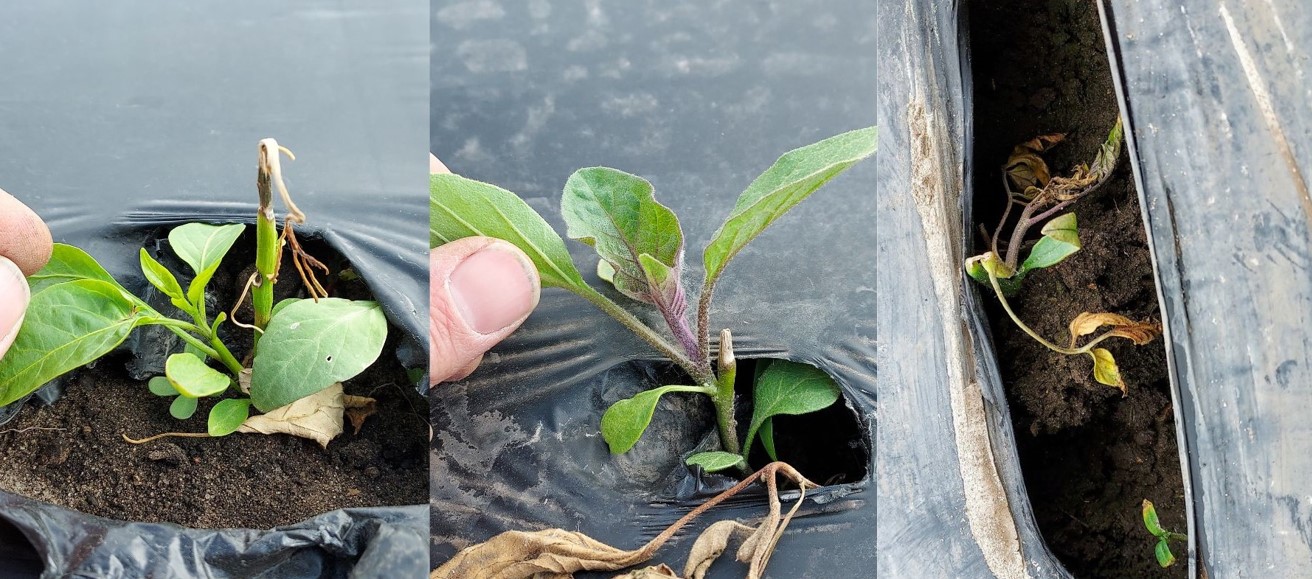
Crop updates
Asparagus
Harvest has plugged onward in west central. Rains on Monday brought welcome soil moisture. They also brought extended wetness. This plus the cool weather could lead to bouts of purple spot in subsequent pickings. As young plantings fern out, consider covering them with chlorothalonil or mancozeb to help prevent purple spot.
Carrots and celery
Celery is in and growing and doing okay on some of our growers farms. Weed control is always a challenge, and some growers are trying out Zidua. Learn more about the weeds this product helps with.
Processing carrots are in and growing after a frustrating planting season. Just like in other spring crops, sowings made close to a heavy rainfall event have faced challenges.
No (0%) leafhoppers were detected with aster yellows in an Ottawa County sample taken on May 31 and an Oceana County sample taken June 6. Aster leafhoppers have been present in some carrot fields, and are most easy to sweep where the nurse crop is not completely dead. Keep an eye out for text updates on infectivity. Please contact Zsofia Szendrei at szendrei@msu.edu if you would like to receive text alerts, which cue you into times of peak risk for aster yellows, a disease vectored by aster leafhoppers.
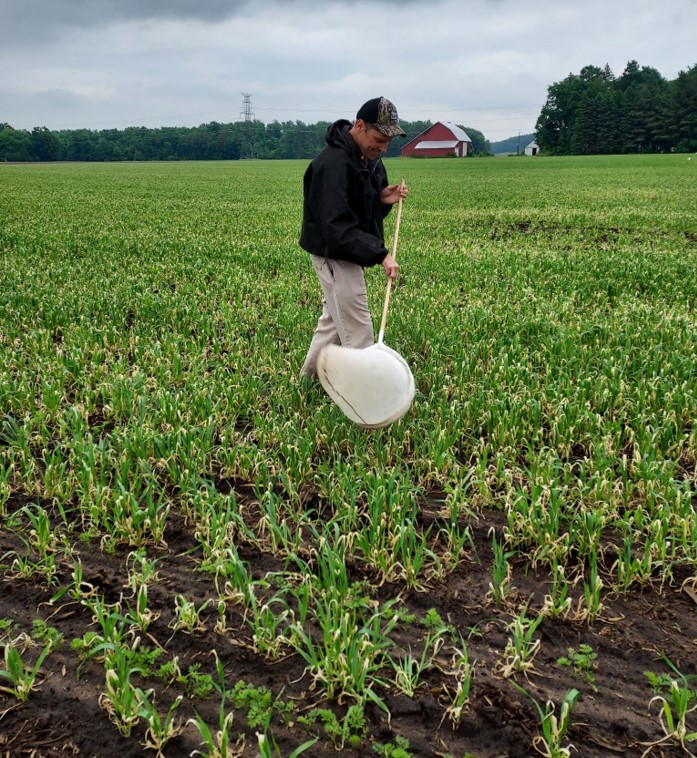
Cole crops
Growers with a history of swede midge need to continue looking for the characteristic twisting leaves and brown scarring in the crotches of leaves and stems on older plantings and either spraying ahead of it or using low tunnels on any newer plantings adjacent to symptomatic plantings. Several photos of damage can be found in this article. A fast-maturing kohlrabi is also an excellent indicator crop because the scarred surfaces expand as the stem swells and are easy to see.
Both imported cabbage worm and diamondback moth caterpillars were present in one West Central location this Monday. Pupae, also known as cocoons, of both pests were also present, so they had been active for a while. Bt-based insecticides are effective for small caterpillars of both pests and conserve beneficials; the aizawi and kurstaki versions both work. For crops like broccoli, diamondback moth can contaminate heads. As that more critical phase approaches, some growers have switched to highly effective insecticides containing chlorantraniliprole (e.g., Besiege, Coragen).
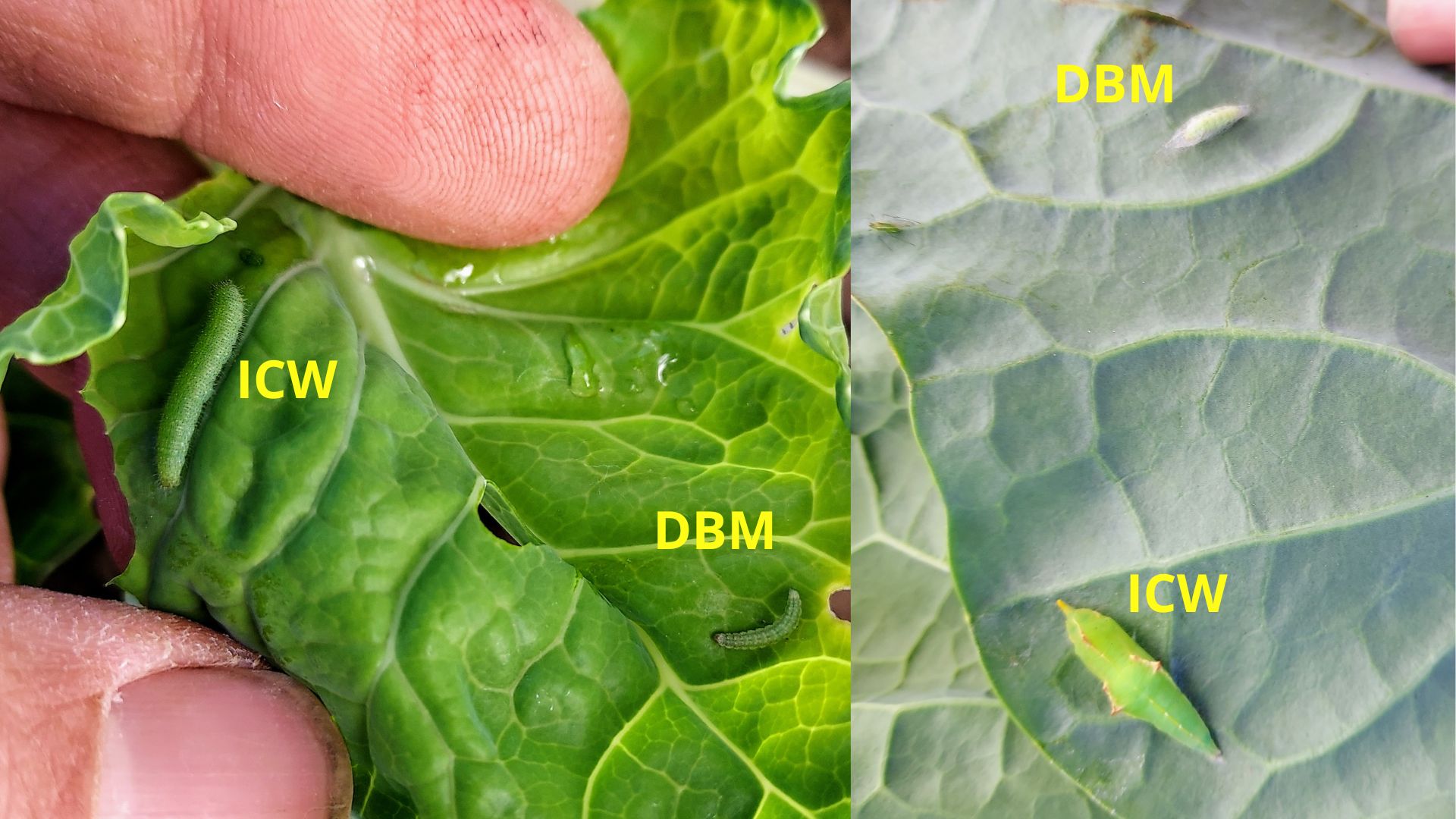
Leafy brassicas suffering from cabbage maggot root feeding could be seen in a few spots over the past few weeks. Plants with extensive root feeding wilt and die; this can look like something else. How do you know it was cabbage maggot? First, just pull up affected plants, if maggots are present, you have your answer. If you don’t find maggots, it’s possible they were there but have pupated, but yucky or tunneled roots provide evidence of past activity (it can be easier to see if you wash the roots). Thankfully, experience has suggested the spring generation causes the most issues. Later in the season leafy brassicas are less affected.
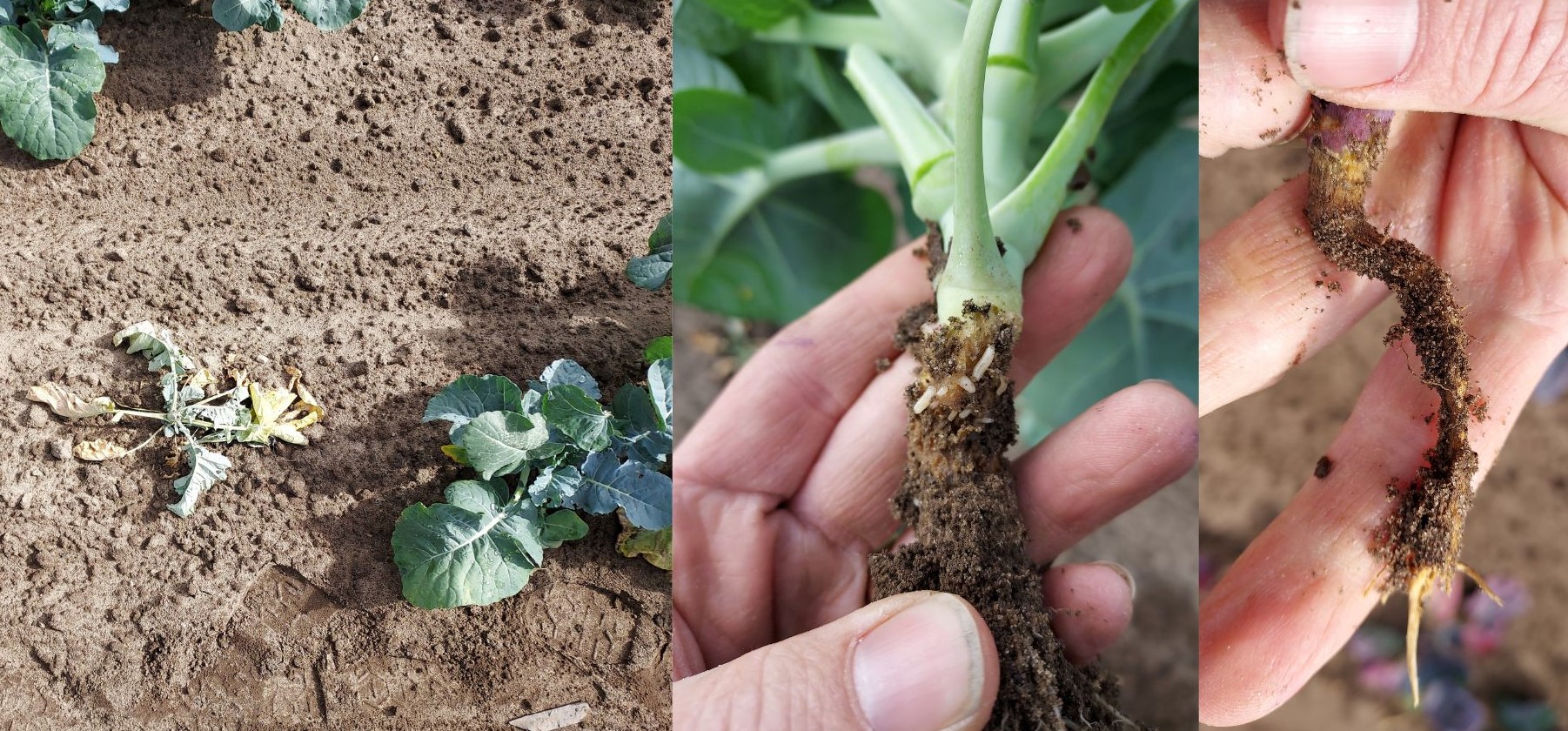
We are between the spring and early summer peak of cabbage maggot activity right now based on degree days at the Allegan, Fennville, Hudsonville and Grant Enviroweather stations. Unfortunately, this does not mean risk is eliminated, especially for root crops. Michigan State University Extension is working with kind, cooperating growers this year to help with this tough transitional year as chlorpyrifos is no longer available. Please do not be afraid to reach out!
Cucurbits/Pickles
Squash and slicing cucumbers being continually seeded and transplanted now. Watermelons and muskmelons are also going in along with pumpkins and hard squash. One field of hard squash in southwest Michigan was flowering this week but appeared to be under stress and not very far along. Pickling cucumber seeding continued across the state.
Phytophthora crown and fruit rot of squash, zucchini, and pumpkin was especially destructive for some growers last year. This pathogen resides in the soil and overwinters readily for many years making crop rotation less effective than expected. Growers who are planting in fields where there have been issues of plant death and fruit rot could consider a complete management program that includes an application of a fungicide in the furrow at planting. The green zucchini plant is somewhat less susceptible to disease than yellow summer squash and some types of hard squash.
It’s important to keep the disease pressure from Phytophthora capsici from building up during the growing season. It is a significant management commitment to successfully grow a susceptible cucurbit in a field known to be infested with this pathogen but it can be done as growers demonstrate each year. Those who are using raised beds, black plastic mulch, and drip irrigation have a distinct advantage as they are able to effectively reduce soil saturation, reduce soil splash into the canopy, and effectively deliver the fungicide where it can directly protect the plant’s crown and roots.
Growers without drip irrigation must rely on fungicides applied in enough water (more than 30 gallons per acre) to reach the crown. Products applied preventively, before disease symptoms are observed, are necessary to keep the pathogen from escalating to the point that it cannot be limited.
Striped cucumber beetles were active in some west central Michigan locations this week. Pre-bloom is a good time to control this pest using broad-spectrum insecticides such as carbaryl or the pyrethroids. This can be helpful where at-plant treatments, or seed treatments, are not possible.
Row covers are effective for small-scale organic growers. Organic growers of all sizes could consider listening to now retired beetle guru Celeste Welty on a previous episode of our podcast; she discusses various options, including use of kaolin clay products like Surround to protect young plants from the early season beetle rush. One other note: Welty found delayed planting was an effective approach to avoid the spring onslaught of striped cucumber beetle, this solution doesn’t require any spraying or row cover if your varieties can mature on time.
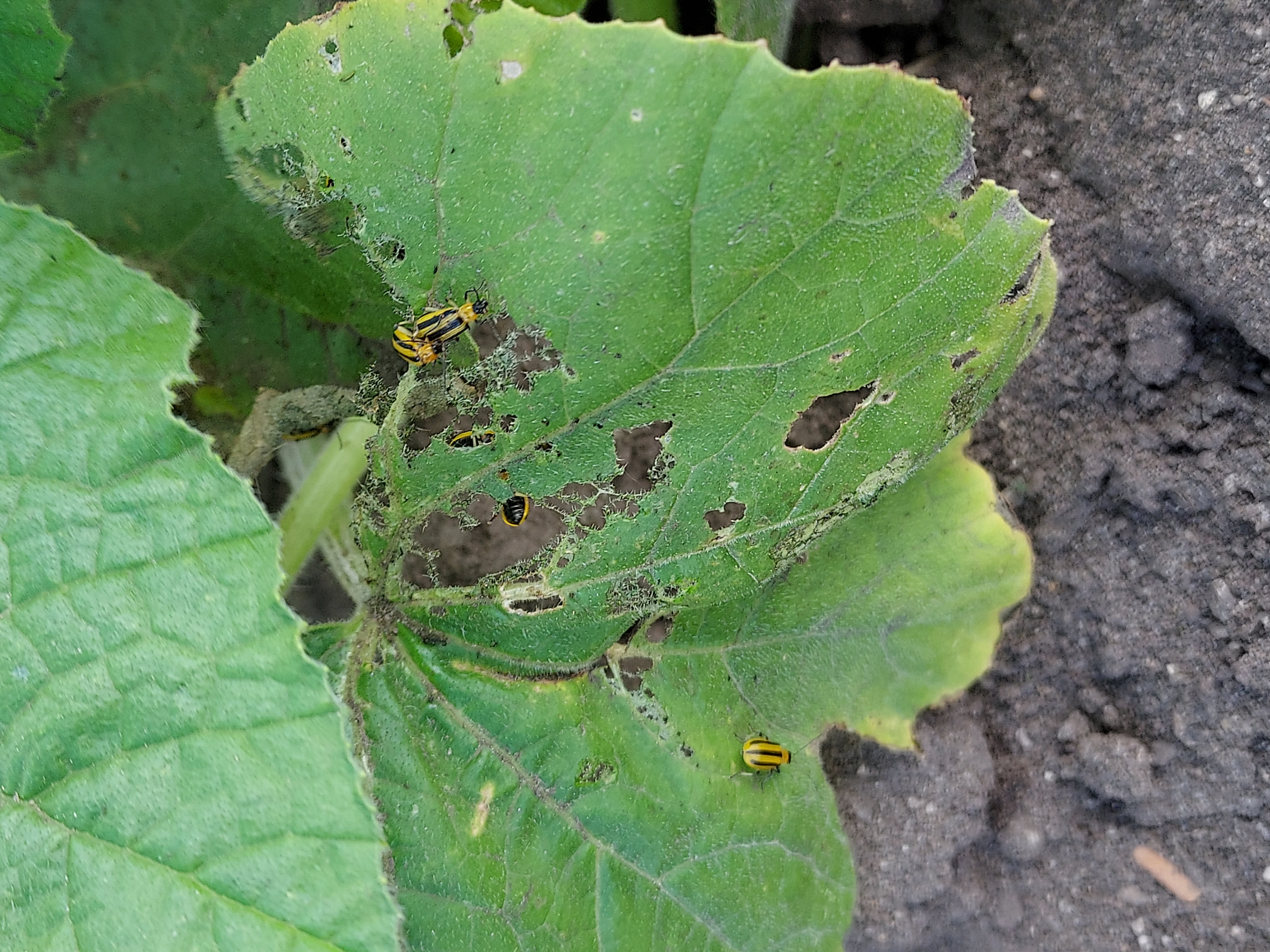
Onions
Onions had two to three leaves in Imlay City, Michigan, this week.
Fruiting vegetables
Earliest peppers were at first flower this week in southwest Michigan, and stakes were being placed in all fruiting vegetable fields. Colorado potato beetle was showing up in eggplants in southwest Michigan.
A question came in this week about pendimethalin (Prowl) as a herbicide for weeds before they emerge after transplanting tomatoes into plastic beds. At that point, it can only be applied in the row middles. Avoid contact with the plants. A common herbicide program for tomatoes includes s-metolachlor (Dual Magnum) or pendimethalin (Prowl) on soils between transplants, with a follow up application of metribuzin (TriCor) a few weeks later. Metribuzin can burn off emerged weeds and also prevent new weeds from emerging.
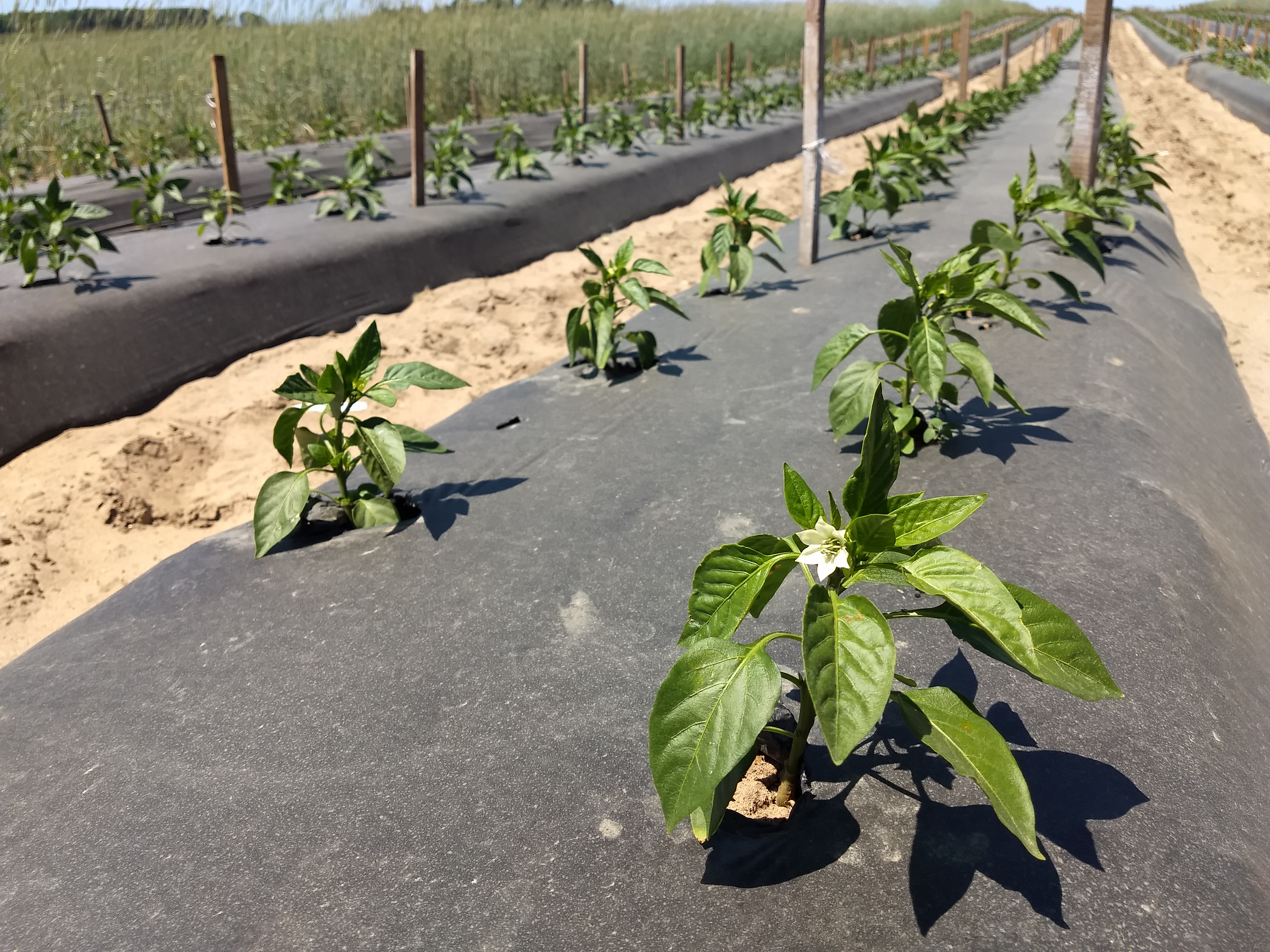
Sweet corn
True armyworm is a very sporadic pest that can occasionally cause major issues. This migratory pest blows up from the south, and just when and where it’s a problem are unpredictable. High risk situations include planting after a heavy rye cover crop. The moths lay their eggs in the rye and caterpillars can move to the sweet corn after it’s planted and comes up. Prioritize fields like this for scouting and look for the characteristic chunks taken out of leaf edges. Caterpillars hide down in the whorl during the day, so look for them there. They are easy to kill with pyrethroid insecticides.
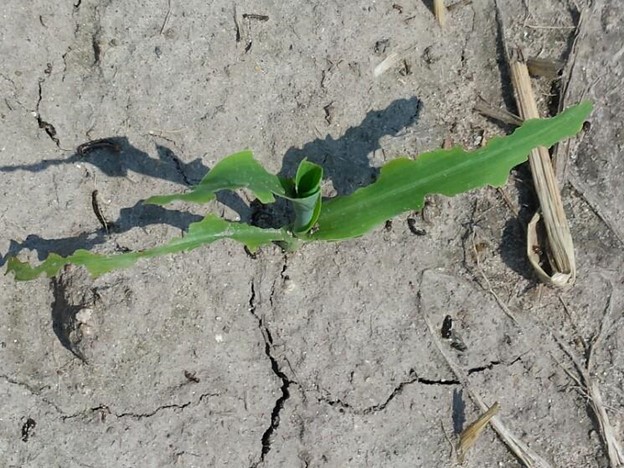
Strawberries
Harvest has begun in southwest Michigan with early varieties. Growers have remarked that berry size is down this year despite good irrigation. This is likely due to heat maturing berries prematurely. Spittle bugs are in their frothy nymph stage, and Lygus bug damage can be found in some plantings. Spittle bugs do not cause economic damage to plants but they can crinkle the leaves and you-pick customers may not like discovering their froth. Lygus bug is more important to manage because of their habit of feeding on the fruit and causing dimples and constrictions.
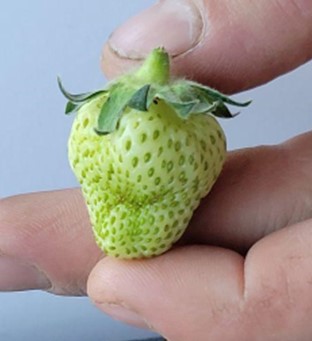
This work is supported by the Crop Protection and Pest Management Program [grant no 2021-70006-35450] from the USDA National Institute of Food and Agriculture.



 Print
Print Email
Email

